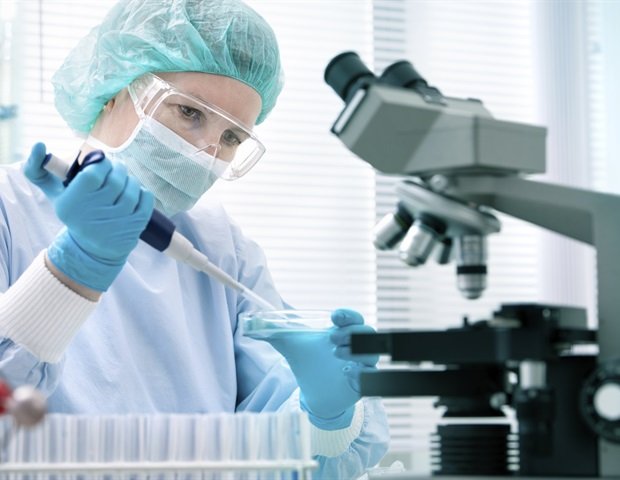A University of Texas at Dallas chemist and his colleagues have developed a new chemical reaction that will allow researchers to selectively synthesize left-handed or right-handed versions of naturally occurring “mirror molecules” and evaluate them for potential use against cancer. of the infection. , depression, inflammation and a host of other conditions.
The results are important because, while the left-handed and right-handed versions, or enantiomers, of the compounds have the same chemical properties, they differ in how they react in the human body. Developing cost-effective ways to synthesize only the version with the desired biological effect is critical to medicinal chemistry.
In a study published in the October 11 issue of the journal Sciencethe researchers describe how their chemical synthesis method can quickly, efficiently, and in a scalable fashion produce a sample that is purely one enantiomer of a pair of mirror-image molecules, as opposed to a mixture of the two. The new method involves the addition of prenyl groups -? molecules made of five carbon atoms -? to enones via a newly developed catalyst in one step of the synthesis process.
Adding a prenyl group is how nature assembles these molecules, but it has been difficult for scientists to reproduce successfully.”
Dr. Filippo Romiti, assistant professor of chemistry and biochemistry, School of Natural Sciences and Mathematics at UT Dallas and corresponding author of the study
“Nature is the best synthetic chemist of all. She is way ahead of us. This research represents a paradigm shift in how we can now synthesize large quantities of biologically active molecules and test them for therapeutic activity,” said Romiti, who is also a Cancer Prevention & Research Institute of Texas (CPRIT) Fellow.
Natural compounds are an important source of potential new drugs, but because they often occur only in minute amounts, scientists and pharmaceutical companies must develop methods to synthesize larger amounts for testing in the lab or making drugs.
In their study, the researchers demonstrated how incorporating their new chemical reaction led to a synthesis process completed in about 15 minutes at room temperature, which is more energy efficient than having to significantly heat or cool substances during of a reaction.
Romiti collaborated with researchers at Boston College, the University of Pittsburgh and the University of Strasbourg in France to develop the new chemical reaction. Romiti’s role included creating the composition process.
The researchers developed their method as part of an effort to synthesize polycyclic polyprenylated acylchloroglycinols (PPAPs), which are a class of more than 400 natural products with a wide range of bioactivities, including fighting cancer, HIV, Alzheimer’s disease, depression, epilepsy and obesity. .
Romiti and colleagues demonstrated a proof of concept by synthesizing enantiomers of eight PPAPs, including nemorosonol, a chemical derived from a Brazilian tree that has been shown by other researchers to have antibiotic activity.
“For 20 years, we have known that nemorosonol is antimicrobial, but which enantiomer is responsible? Is it one or both?” Romitis said. “One version may have this property, but the other doesn’t.”
Romiti and colleagues tested their nemorosonol enantiomer against lung and breast cancer cell lines provided by Drs. John Minna, director of the Hamon Center for Therapeutic Oncology Research at UT Southwestern Medical Center.
“Our enantiomer of nemorosonol had quite decent results against cancer cell lines,” said Romiti. “This was very interesting and could only have been discovered if we had access to large amounts of pure enantiomeric sample to test.”
Romiti said more research will be needed to confirm whether one enantiomer of nemorosonol is specifically antimicrobial and the other anticancer.
The results of the study could impact drug discovery and translational medicine in several ways. In addition to informing scalable and more efficient drug production processes, the findings will allow researchers to make more effective natural product analogs, which are optimized versions of the natural product that are more potent or selective in how they work in the body.
“We developed this process to be as drug-friendly as possible,” Romiti said. “This is a new tool for chemists and biologists to study 400 new drug sequestrants that we can make, plus their analogs, and test their biological activity. We now have access to powerful natural products that we previously couldn’t synthesize in the lab.”
Romiti said the next step will be to apply the new reaction to the synthesis of other classes of natural products, in addition to PPAPs. In August, he received a five-year, $1.95 million Research Maximization Award for Early-Stage Investigators from the National Institute of General Medical Sciences, a component of the National Institutes of Health (NIH), to continue his work in this area.
In addition to CPRIT, the research was supported by funding from the National Science Foundation and from the NIH (2R35GM130395, 2R35GM128779) to co-corresponding authors and professors of chemistry Drs. Peng Liu at the University of Pittsburgh and Dr. Amir Hoveyda in Boston. .
Source:
Journal Reference:
Ng, S., et al. (2024) Catalytic Prenyl Conjugate Additions for Synthesis of Enantiomerically Enriched PPAPs. Science. doi.org/10.1126/science.adr8612.
